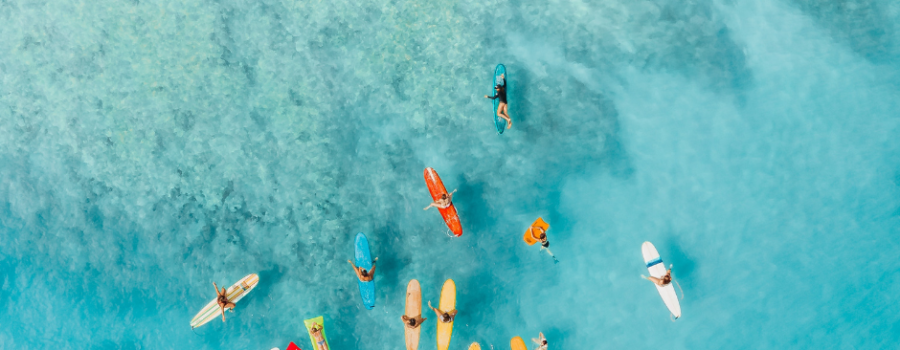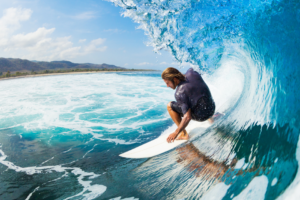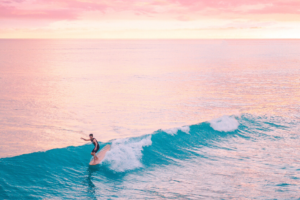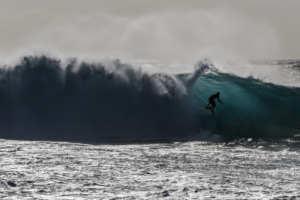Welcome to the world of surfing, where the thrill of riding waves and the beauty of the ocean come together to create a truly unforgettable experience. Whether you’re a beginner or an experienced surfer, there’s always room for improvement in your technique.
There are so many ways to improve your technique, both in and out of the water, some of which can be important to know. The method is important in developing an identity on the water and gaining confidence on the board and with the ocean.
It doesn’t matter your level; you can always find new and interesting ways to lay down a foundation for developing your technique or, in the case of veteran surfers, just getting better!
Practice
It’s a universal law at this point that practice makes perfect, and surfing is no exception to the rule! Nobody is born shredding waves; even the greatest surfers of our time had to practice to gain fame.
Practice is, without a doubt, a key aspect to success in any field, and at least with surfing, practice doesn’t feel like a chore.
See, when you practice, even if it feels like you’re not making progress, you learn as you go. You get to know your board and the ocean better, develop stronger coordination, and can throw in some tricks to challenge yourself.
It’s like learning to walk and learning to talk. Nobody starts out perfect; you’ll make mistakes, and even if you don’t feel like you’re learning from them, you are.
So set up a routine, hit the waves every Saturday, and just have fun with it. Eventually, your own technique will come naturally.
Find the Best Board for You
Everyone has a unique personality and method, and it’s only fair to find the right tools to suit you to ensure you perform at your optimal best!
Depending on your surfing level, you can find a menagerie of different board styles and makes that could be the best fit for you.
Only some people like the feel of a Fishboard or have the skills to utilize it, and even then, you can still choose the material it’s made of. For example, someone might prefer wood over soft foam, while others prefer the lightweight nature of fiberglass.
If the movie Surf’s Up is anything to go by, you need to find your own board. We loved the plucky animation following the misadventures of surfer Cody, but aside from the classic humor, there were a lot of useful tips too.
Your surfboard should be as unique as you are and should suit the style of surfing you’d like to practice.
Work on Your Techniques Outside the Water Too
It may sound redundant, but you don’t have to be in the water to practice your technique. There are plenty of ways to engage in exercises and routines that’ll better your performance on the water.
So if the weather is gnarly, and the swell looks terrible, don’t sweat; you can still practice!
Dry Land training is just as important as practicing in the ocean and can help you improve your pop-ups, coordination, flexibility, and more.
Engage in activities like Yoga to help improve core strength and flexibility. Meditate to prepare your mental state. Build a makeshift setup to practice board balance and movement.
Your body can build up muscle memory when performing certain exercises and routines; this muscle memory doesn’t have an off switch and can come in handy when you’re out on the open ocean waiting for the next wave. Don’t disregard dry land training; it’s a very powerful tool!
Foot Placement and Weight Distribution Matter
Your foot placement and weight distribution on the board are two of the most important aspects of the sport. When you lack these skills, you lack control and maneuverability.
The best part of surfing is navigating the waves, and in order to do that, you need to find the best foot placement and weight distribution to steer your board where you want it to go.
These aspects are imperative for new surfers and veterans discovering a new board. As we’ve mentioned before, boards are as unique as the surfer and require some getting used to because of their differences.
But once you’ve mastered your footing and can balance yourself steadily on the board, nothing in the world can stop you from catching the perfect wave.
You can practice footwork and weight distribution on dry land or in the water, and you’d be surprised at how much these affect your technique and overall performance in the sport.
They are keys to controlling balance; without your balance, you might as well take up body surfing; at least that way, you won’t have to stand!
Learn to Read the Waves
Surfing also requires a fair amount of mental training; while your body will learn the movements and go with the flow, your mind must also be prepared to take on new knowledge.
A technique completely worth mastering is learning how to read the ocean. Like people, it has a mind of its own, and while it’s impossible to predict every motion it makes, you will start to see the patterns and become instinctual about the best times to surf and the best waves to surf.
The changes can be subtle, but it’s a tremendous mental challenge to try and decide if it’s going to have a good crest or a nice break. But the rewards are worth it; it’s like growing a bond with a pet; you’ll start to predict behaviors, and learn how to have the greatest experiences on the water, just by putting in the effort day by day to learn the motion of the ocean.
Conclusion
As we’ve mentioned, you can learn a lot of new methods to improve your technique. And if you’re interested in learning even more, you can check out North Shore Beach Boyz, where the sun, sea, and tide are a way of life for passionate surf instructors.
Plus, you can choose lessons to suit your needs and learn new and interesting ways to hang ten!
So, put your trust in North Shore Beach Boyz, to teach you the best ways to take advantage of the gorgeous ocean of Honolulu!







Recent Comments